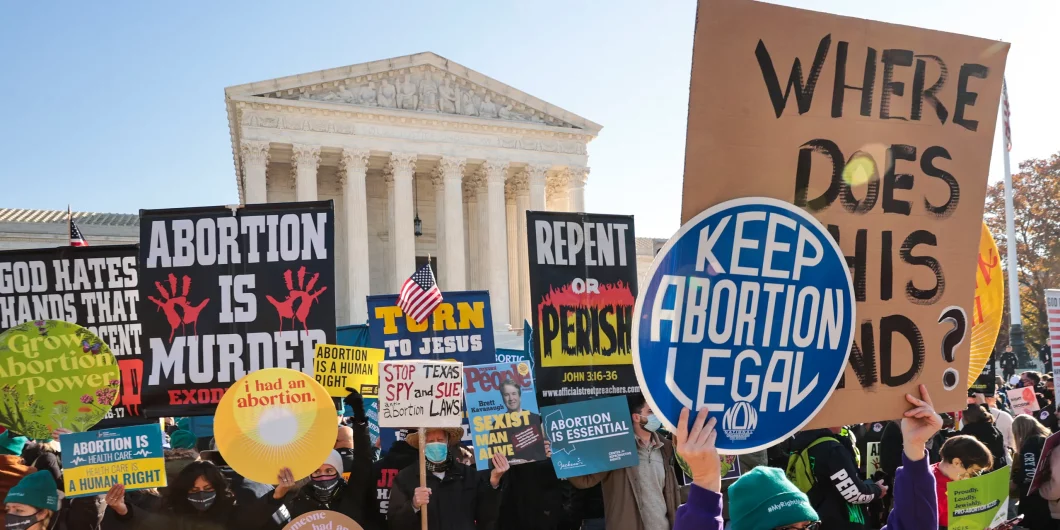What Majority Should Rule?
Only hours after the U.S. Supreme Court announced, in Dobbs v. Jackson Women’s Health Organization, that it is overturning the 49-year-old ruling in Roe v. Wade, the Washington Post ran on its website a report headlined “Supreme Court goes against public opinion in rulings on abortion, guns.”
The most obvious problem with this headline and its accompanying report is that they imply that the Court is, or ought to be, something that it is not and should not be, namely, a political institution. As I wrote in a letter to the Post,
The very reason for having a judiciary the members of which are not elected but, instead, are appointed to lifetime terms—and whose charge is confined to settling disputes that arise under the law, including that of the Constitution—is to insulate the judiciary from fickle and often-dangerous political passions. According to Alexander Hamilton in Federalist 78, a great benefit of an independent judiciary is that it will protect the Constitution against perils that arise “whenever a momentary inclination happens to lay hold of a majority … incompatible with the provisions in the existing Constitution.”
But there looms another issue, one grounded in the fact that Dobbs does not make abortion illegal. Dobbs merely returns to state governments the authority to restrict legal access to abortion. State governments are not obliged to so restrict. If the majority public opinion to which the Post refers can be interpreted, as seems reasonable, as opposition to at least some restrictions on abortion (rather than as opposition to some train of lawyerly reasoning), then it seems that the impact of the Dobbs ruling on policy will be minimal. State legislatures—which unequivocally are political institutions—will not restrict access to abortion.
Obviously, though, this last conclusion is too simplistic. While at least some restrictions on abortion might indeed be opposed by a majority of Americans as a whole, no state legislature is elected by Americans as a whole; each state legislature is elected only by citizens of that state. Even if a majority of Americans oppose restrictions on abortion, a majority of the citizens of one or more individual states—for example, Mississippi (the state that gave rise to the Dobbs litigation)—nevertheless might support such restrictions and vote accordingly.
This reality presumably plays a key role for the pundits and politicians who insist on the significance of the fact that at least some government-created restrictions on abortion are opposed by a majority of Americans. The presumption, apparently, is that if a majority of Americans support legal access to abortion, then this majoritarian preference should trump any contrary preference of a majority of voters at the state level.
Yet why? A foundational component of the constitutional structure of government in the United States is federalism. While reasonable people can, and do, debate over the proper allocation of power between the national government and the various state governments, few people not on the far Progressive left believe that state governments are, or should be, mere administrative units beholden to Washington. According both to custom and to the Constitution—its structure and the 10th amendment—each state government retains a vast scope to exercise police powers, as well as to choose the details of this exercise. States do so largely independently of each other and of the national government. Of course, majoritarian elections in each state determine which, and how, police powers are exercised. Why should, in any state, the preference of a majority of Americans prevail on the question of abortion over the preference of a majority of that state’s voters?
Even if, contrary to fact, we Americans were in widespread agreement that the best form of government is simple and unconstrained majority rule, this agreement would not settle the question of the level at which majorities should rule. If someone insists that abortion policy should be set nationally and determined by the wishes of a majority of American voters as a whole, that person is then an opponent of majority rule from the perspective of majoritarians who believe that the relevant polity for determining abortion policy consists of citizens of each state, or perhaps of citizens of each county, city, or town.
Practical difficulties often arise when trying to square questions of inviolable individual rights with majoritarian norms.
While I find much practical merit in federalism—jurisdictional competition is an excellent thing!—I concede that reasonable arguments can be made for having abortion policy determined at the national level. But answering the highly contentious question of whether or not legal access to abortion should continue to exist in uniform fashion across the nation is not legitimately done merely by polling Americans as a whole during a combative debate over the merits of Roe v. Wade, discovering that a majority of them currently support legal access to abortion, and then concluding that overturning Roe is unjustified.
The above reflections point to the importance of constitutional rules. Unwise indeed is the person who truly believes in unlimited and unconstrained majority rule. Fortunately, most people, if led to reflect on the nature of collective decision-making, understand that the public welfare is best served by putting some restraints on the power of majorities. Most people, for example, realize—along with America’s founders—that the majority of people might today be irrationally inflamed by some passion to support a course of action that this same majority will, when passions cool tomorrow, oppose.
When choosing constitutional rules, therefore, sensible people—like Ulysses having himself tied to the mast—wish to protect themselves and others against the rash decisions they are too likely to make while in the throes of anger, fear, or some other passion. The means of doing so include arranging to make government decision-making more deliberate through the operation of checks and balances and separation of power, as well as specifying some rights that the government may not violate.
A prominent example of a right that many people today believe should be beyond the reach of majority rule is access to abortion. People holding this belief generally support Roe v. Wade, for that ruling did indeed identify the right to abortion as one that should not be subject to the whims of voters and put at risk by the hurly-burly of majoritarian politics. It’s therefore somewhat inconsistent for supporters of abortion rights to object to overturning Roe by appealing to the preference of today’s majority.
Supporters of the Dobbs ruling which overturns Roe can now, ironically, find in a prominent pro-abortion-rights publication—the Washington Post— justification for allowing access to abortion to be determined by majority rule, which is precisely what is now allowed at the state level by Dobbs.
My personal grappling with both the ethical and legal questions raised by abortion drew me long ago to the conclusion that these questions are far more complex and challenging than many of the loudest advocates on either side seem to realize. No reader should infer from what’s written above any conclusion about my stance on appropriate abortion policy. The essay is intended merely to demonstrate the practical difficulties that often arise when trying to square questions of inviolable individual rights with majoritarian norms. It’s illegitimate to appeal to one or the other simply to score points in a debate.


